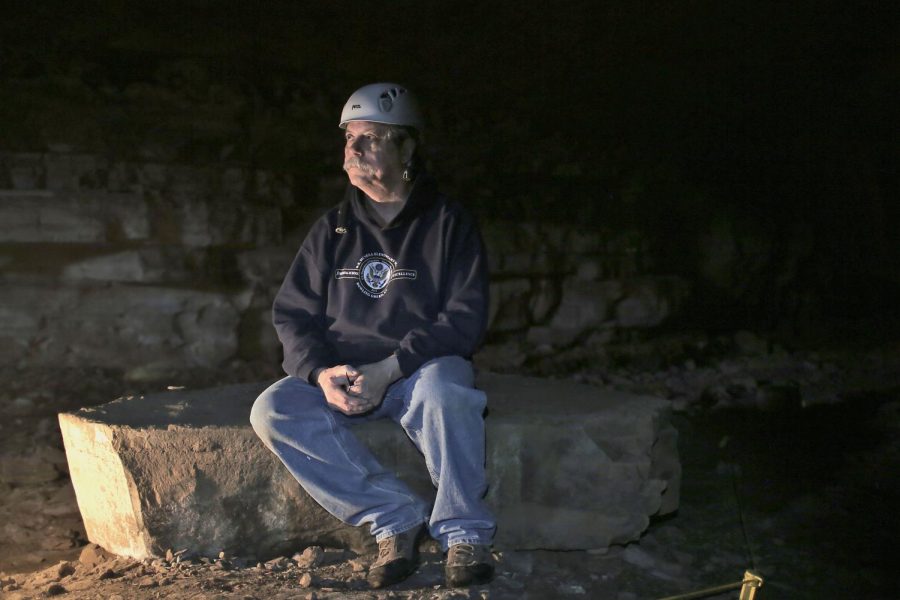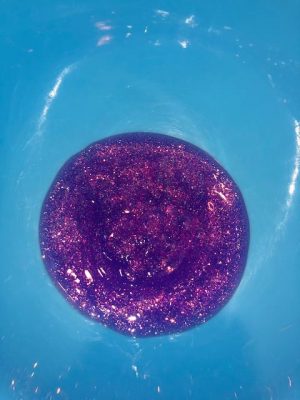Far Out and Far Below: Geology professor’s lifelong passion for caves brought him to Bowling Green
April 8, 2021
In 1964, Chris Groves was a 6 year old in Maryland flipping through a national geographic magazine that he received through a subscription from his Grandmother.
In the magazine he saw a picture of a few spelunkers waist deep in cave water and was instantly hooked by the adventure and mystery of cave exploration.
“That was about as far out as you could be and still be on the planet,” Groves said in an interview, “there was an instant attraction, because it was so wild and “out there”.”
Groves spent his adolescent years continuing to explore caves, but didn’t think he would ever be able to form a career out of it until he discovered WKU.
“In the spring of 1981, I was reading in a caving magazine and in the back there was a tiny add for summer classes at Mammoth Cave through Western Kentucky University,” Groves said. “The short story is that I came down for one week, and at the end I came back to Maryland to grab my stuff and came right back to start school in the fall.”
Groves got a Bachelors and Masters degree from WKU in geology and geography, and then went on to get his PhD at the University of Virginia.
“It just worked out that when I was finishing up my PhD, a job opened up here,” said Groves. “I met my wife down here so we moved back, and I feel like I’ve been on vacation the whole time.”
Now, Chris Groves is a University Distinguished Professor of Hydrogeology at WKU, focusing on the studies of groundwater and “karst” areas such as Mammoth Cave, which is just under 30 miles outside of Bowling Green.
Groves defined Bowling Green as one of the most iconic karst areas, saying that we have a multitude of caves, underground rivers, sinking streams, big streams, and corvette-swallowing sinkholes.
“There’s always something to go see wherever you are on Earth,” said Groves. “But, for people interested in caves, Bowling Green is like a Mecca.”
According to Groves, there are still places in the Bowling Green karst areas that have yet to be explored, and the sheer thought of that is exhilarating to those who love cave exploration.
“Mammoth Cave National Park has been designated as globally significant in two different United Nations programs, so this is a world gem,” Groves said. “I could go on trip after trip after trip and look at different things every time.”
Groves’s spirit for adventure has not dissipated since his childhood, and that has been made clear by the amount of hands-on fieldwork he does with his classes in the geologist’s Mecca.
“Just in the past week, I’ve taken 7 class trips to Mammoth Cave,” said Groves. “I’ve been working with the national park so long that I can get the key to Mammoth Cave, so that we can meet after they’ve closed and look around.”
The main reason Groves likes to incorporate class trips into his curriculum is due to the fact that the memories tend to stick with him and his students for a lifetime, which according to Groves is something that can’t be said about all the other classes he’s taken in his career.
“In school, and college, and grad school, I think I can remember something about every single time that we went out somewhere.” said Groves. “I run into students that remember our trips to Mammoth Cave even years after they happened.”
The prevalence of COVID-19 hasn’t prevented Groves from taking his class trips either, and in fact it has given him ideas for future trips.
“They’ve let us continue our trips throughout the virus, but we are limited to small groups and have to wear masks,” Groves said. “It turns out that having a smaller group is a better experience, because it’s more intimate, so even if things get back to normal I’m gonna keep taking smaller groups.”
Groves spends his time outside of the classroom conducting research, and in some instances lending a helping hand to those who need it.
“There are Mennonite and Amish communities that choose to live without electricity, meaning that they don’t have any sort of water treatment,” Groves said. “My students and I are working with these communities to test water and negotiate a way for them to maintain their spiritual beliefs, but not get sick from drinking polluted water.”
Groves is also researching the effects of caves and limestone dissolution on Co2 emissions in the atmosphere. He is attempting to find a way to measure how much Co2 is being pulled from the atmosphere from geological processes.
“This is a lot of what I do with Chinese scientists, and various other colleagues,” Groves said. “we are figuring out how to measure this, and then making measurements around the world to get a better global estimate of how much Co2 is removed each year.“
Groves and a colleague also recently stumbled on some fluorescent minerals in Mammoth Cave, which had never been discovered until then.
“This was completely new and completely undiscovered, and we found it by pure chance,” Groves said.
Groves is now working with fellow Professor Andrew Wulff, a mineral expert in the geology field, to identify the fluorescent minerals in which some may be so rare that they have never been discovered in any cave anywhere before.
“That’s what I love about this [cave-exploration], sometimes it’s just pure serendipity,” Groves said.
Shane Stryker can be reached at shane.stryker614@topper.wku.edu. Follow him on Twitter @shanestryker.















